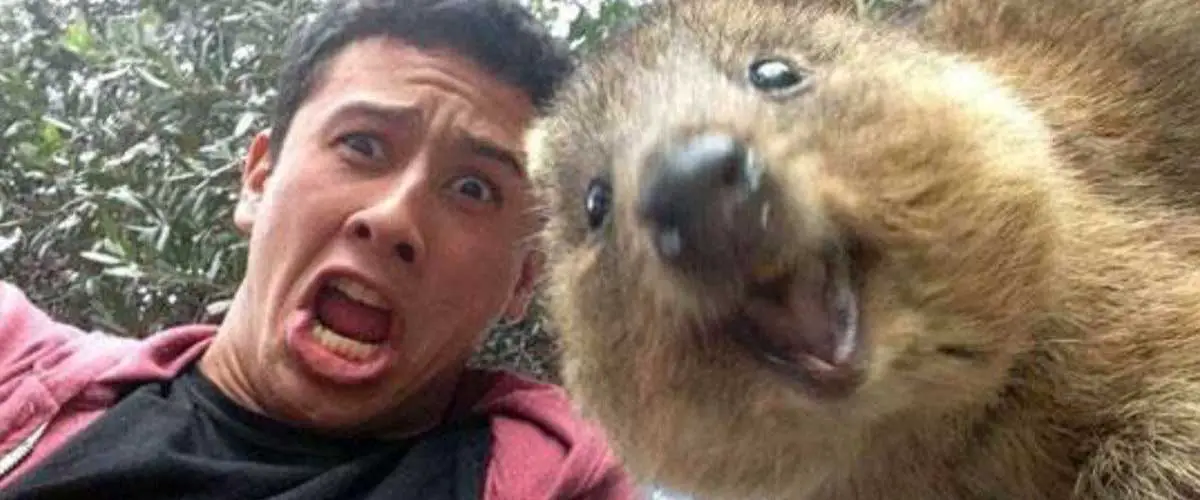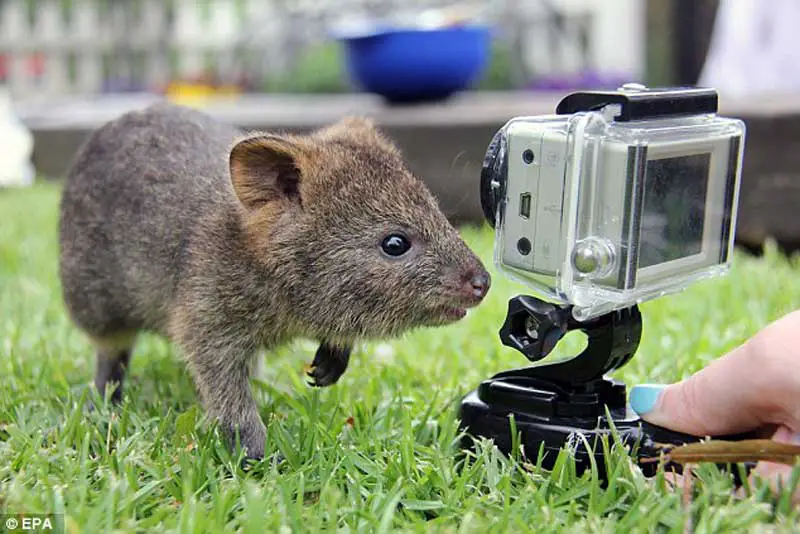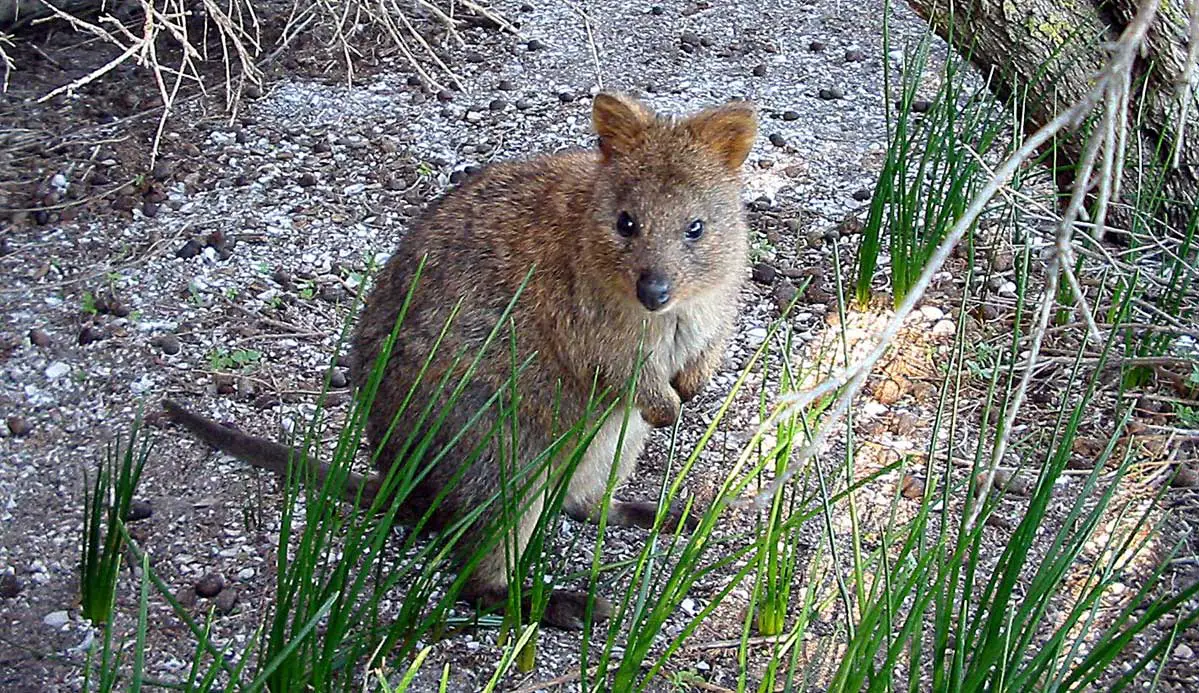The Quokka is one of the smallest wallabies. Distinct features include short and fairly coarse hair with coloration generally brown with lighter underparts. The ears are short and rounded, the nose is naked and the tail is sparsely furred and short.
The best place to see quokkas in the wild is Rottnest Island, a small holiday island off the coast of Perth, WA. Quokkas have free access to the whole of the island and it is rare to visit Rottnest, even on a day trip, without seeing one.
During the day, they tend to rest within the shade of clumps of low trees scattered around the island. One place where they often congregate is beside the main road west from the Thomson Bay settlement between Herschell Lake and Government House Lake. Here, they often come out beside the road, expectantly seeking food scraps from passing walkers or cyclists. Quokkas are also known to come into the settlement areas at dusk seeking food.
Quokkas can be seen at Perth Zoo, Caversham Wildlife Park and Whiteman Park, all of which are in the Perth metropolitan area. Quokkas are also found in limited numbers at a some zoos in other states.

Quokka selfies are all the rage
This single species inhabits southwestern Australia, including Rottnest Island and Bald Island.
On islands, the quokka occurs in a variety of habitats. Despite its preference for densely vegetated, moist conditions, the quokka survives in large numbers on Rottnest Island in a harsh, seasonally arid habitat where the low vegetation affords little cover, and potable water is limited. As a result of limited water on Rottnest Island, those populations farthest from sources of fresh water suffer the highest mortality. On the mainland, they seem restricted to dense vegetation in swamps around dry sclerophyll forest. The preferred shelter is a thicket or some other shady place where the animal can avoid the summer heat. An individual returns to the same shelter every day through most of the year, but sometimes changes sites.

On Rottnest Island the populations are organized into family groups. Adult males dominate the family and also form a linear hierarchy among themselves. Although the hierarchy is usually stable, on hot summer days the adult males fight intensively for the best shelters. Availability of such sites is the main factor in limiting the populations. There is little evidence of territoriality, and groups of 25 to 150 individuals may have overlapping home ranges, especially during the summer when many groups concentrate around available fresh water. At night, when quokkas emerge to feed, they makes runways and tunnels through dense grass and undergrowth. They hop on their hind legs when moving quickly and do not use their tail as a third prop when moving slowly, unlike kangaroos and large wallabies. They are terrestrial, but can climb up to 1.5 meters to obtain food.
At night the quokka emerges from its shelter to feed mainly on a variety of grasses.
Until the 1930’s the quokka was very common in coastal part of the mainland of southwestern Australia. Subsequently it disappeared, except for a few small colonies on the mainland and the two relatively numerous island colonies. There is concern for the populations living on Rottnest island because of development of the island for recreational purposes. The quokka is listed as endangered by the USDI.










